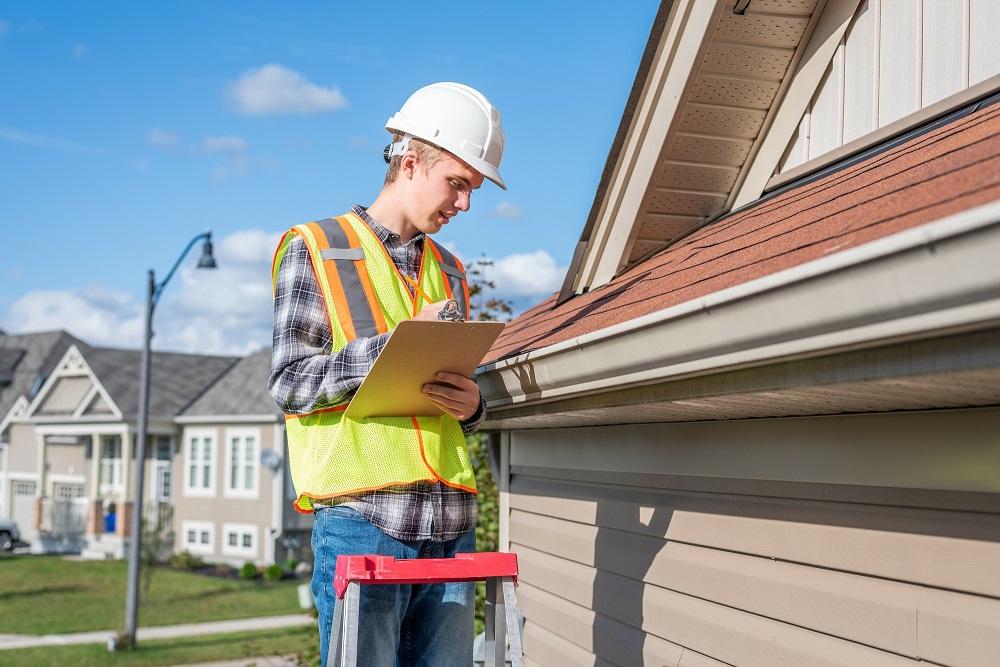As a homeowner, the roof over your head likely gets taken for granted until problems arise. Out of sight, out of mind often applies to a house’s arguably most critical component. However, just like your health warrants regular check-ups, your roof demands the same proactive approach and preventative care. Conducting thorough roof inspections at least a few times per year enables you to assess your roof’s current condition and catch issues in the early stages.
Remember, your roof protects your home from harsh weather conditions, and over time, it undergoes wear and tear, which means it needs proper care and maintenance. That said, here are some tips to help you assess the health of your roof.
- Check for Water Damage
Water damage is one of the most common issues that accompany roof damage. Check for signs of water damage, such as water spots, peeling paint, or discoloration on your walls and ceiling. If you notice water damage, it could mean that your shingles are damaged and water is leaking into your home. In that case, it’s recommended that you contact your trusted roofing contractor for immediate repairs. You can find more info here about hiring reputable roofers and what services they can do for your home besides conducting roof inspections.
- Look for Damaged or Missing Shingles
Check the condition of your shingles for damage or missing pieces. Strong winds and harsh weather can often cause roofing shingles to become loose or disintegrate, exposing your home to weather elements. So, if you detect any damage or missing shingles, contact a professional roofing contractor for repairs or replacement.
- Inspect the Flashing
Flashing is the metal material placed around the roof’s openings, such as vents or chimneys. Flashing helps to prevent water from infiltrating the roof. If your flashing is damaged or corroded, it can lead to water leaks. Inspect the flashing for damage or corrosion and contact a professional roofing contractor for replacement if necessary.
- Check for Algae or Moss Growth
In some cases, algae and moss can grow on your roof when moisture accumulates on the shingles or while growing under damp conditions. Although it may not harm your roof, it can be an eyesore and affect your home’s aesthetics. You can clean the algae or moss with bleach and water. However, be careful not to apply too much pressure while cleaning, as this can damage the shingles.
- Assess the Gutters and Downspouts

Gutters and downspouts help channel water away from your home’s foundation, preventing water damage. To ensure they function well, check that your gutters and downspouts are free from debris, leaves, and other obstructions. That way, water can flow freely away from your home.
- Check for Roof Sagging
Examine your roof for any indications of sagging or unevenness. A sagging roof can signify structural issues or excessive weight on the roof, such as accumulated snow or water. If you notice any sagging, contact your trusted roofer immediately to assess and address the underlying cause.
- Evaluate Roof Age
Consider the age of your roof and include it in your roof inspection checklist. Generally, roofs have an average lifespan of 20-25 years, depending on the materials used. If your roof is exceeding or at least approaching this age range, it may be time to consider a roof replacement or more frequent inspections to ensure its continued durability.
- Assess Attic Ventilation
Along with other things, proper attic ventilation is essential for maintaining a healthy roof. Check your attic for adequate airflow and ventilation. Otherwise, poor ventilation can lead to moisture buildup, ultimately accelerating the deterioration of your roof. Ensure that vents are clear and unobstructed.
- Look for Granule Loss
Examine your downspouts and gutters for any signs or presence of granules from the shingles. Excessive granule loss is a sign of aging or damaged shingles. Granule loss can compromise the shingle’s ability to protect your roof from weather elements, so it’s important to address this issue promptly.
- Consider Roofing Debris
Clean off any debris, such as leaves, branches, or moss, from your roof’s surface regularly. Debris buildup can hold moisture, leading to potential damage to the shingles or even water leakage. Regular maintenance, including clearing debris, can help prolong the lifespan of your roof.
- Schedule Professional Inspections
While regular DIY inspections are important, it’s also crucial to schedule professional roof inspections at least once every few years or after major weather events. Professional roofers have the expertise to identify hidden problems that may not be visible to an untrained eye. They’ll also be able to inspect the elevated or unreachable parts of your roof, which might be dangerous when done on your own.
The Bottom Line
Your roof is your home’s first line of defense against weather elements, and regular inspections can help prolong your roof’s life and save you money in the long run. Remember, small issues can quickly turn into significant problems that require expensive repairs if left unaddressed. So, stay vigilant, and your roof will continue to shelter you and your family for years to come.
